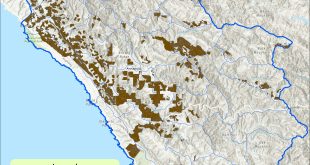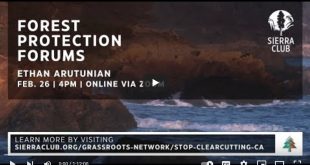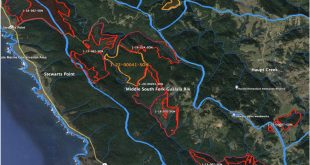Compiled by Alan Levine
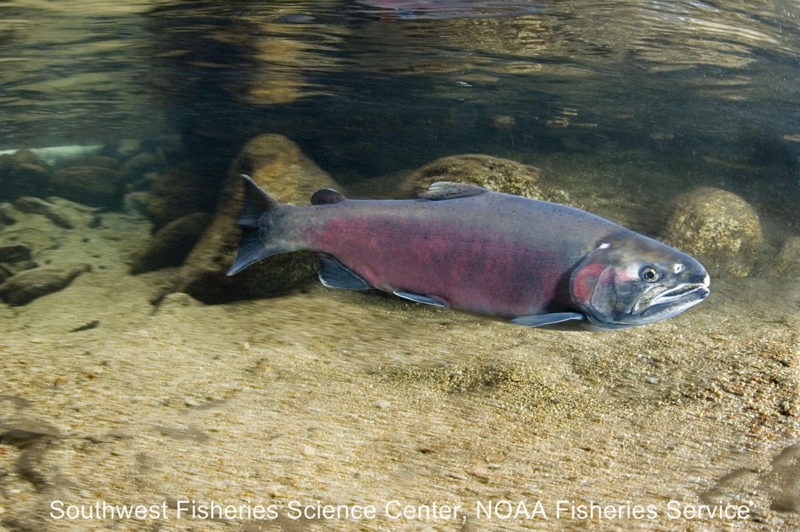
California Forest Management Practices And The Conservation Of Anadromous Salmonids
https://nrm.dfg.ca.gov/FileHandler.ashx?DocumentID=30710
by Stephen Swales Ph.D., Fisheries Branch, Wildlife and Fisheries Division, California Department of Fish and Game,
November, 2010
In California and the Pacific Northwest, widespread declines in the abundance of anadromous salmonids over the last several decades have been attributed largely to the loss and degradation of suitable habitat conditions in river systems for the rearing of juveniles and spawning of adults. Numerous studies have shown that forest management practices may have significant adverse effects on the habitat conditions of anadromous salmonids through, for example, loss of riparian vegetation and increased input of fine sediments. . .
A Scientific Basis for the Prediction of Cumulative Watershed Effects
https://ucanr.edu/repository/view.cfm?article=54944%20&groupid=6
by The University of California Committee on Cumulative Watershed Effects
Professor Thomas Dunne (chair), University of California Santa Barbara
WILDLAND RESOURCES CENTER
Division of Agriculture and Natural Resources
University of California
Berkeley, California 94720
Report No. 46
June, 2001
This report proposes an approach for breaking the current logjam in the prediction of Cumulative Watershed Effects resulting from timber harvest in regions such as the coastal redwood region of northern California. We preface the proposal with a review of the nature of Cumulative Watershed Effects (CWEs) of timber harvest and a critique of current methods for assessing them. We propose that responsibility for the assessments be taken out of Timber Harvest Applications and given to a new unit of a State agency, which would make whole-watershed assessments of how land use alters the risk of damage to ecosystem values. The risk assessments would be made through spatially registered mathematical simulation of watershed processes, using recently developed methods of modeling and spatial data acquisition and processing . . .
Final Report on Sediment Impairment and Effects on Beneficial Uses of the Elk River and Stitz, Bear, Jordan and Freshwater Creeks
Authored by the Humboldt Watersheds Independent Scientific Review Panel
Under the Auspices of the North Coast Regional Water Quality Control Board
December, 2002
The North Coast Regional Water Quality Control Board (NCRWQCB) convened an Independent Scientific Review Panel (ISRP) to address questions that will assist the NCRWQCB fulfill its mission to protect and restore sediment impaired beneficial uses of waters of the state in Freshwater, Bear, Jordan, Stitz and Elk watersheds in Humboldt County, California, and to advise on interim physical actions that can be initiated in the short-term to fulfill this mission. Longer term issues, including Total Maximum Daily Load (TMDL) development and implementation issues, will be addressed in a different process . . .
Phase II Report: Independent Scientific Review Panel on Sediment Impairment and Effects on Beneficial Uses of the Elk River and Stitz, Bear, Jordan and Freshwater Creeks
http://www.krisweb.com/biblio/hum_swrcb_collison_2003_phaseiiisrp.pdf
Authored by the Humboldt Watersheds Independent Scientific Review Panel
Under the Auspices of the North Coast Regional Water Quality Control Board
August, 2003
In the first phase of its work, the Panel produced a report entitled, “Final Report on Sediment Impairment and Effects on Beneficial Uses of the Elk River and Stitz, Bear, Jordan and Freshwater Creeks” on December 27, 2002, and presented its findings at the January 23, 2003 Regional Water Board meeting. On January 24, 2003, the Regional Water Board passed five motions relative to the Panel’s findings and directed the Panel to respond to a new set of questions as part of a Phase II. The Regional Water Board specifically requested that the Panel review and comment on the levels of protection in the HCP/SYP and the effectiveness of existing mitigation measures. The Regional Water Board anticipates that the Panel’s Phase II findings will be used to inform the scientific basis for the development of TMDLs in all five watersheds . . .
Logging and turbidity in the coastal watersheds of northern California
By Randy D. Klein, Jack Lewis, Matthew S. Buffleben
April, 2011
Degradation of water quality – especially turbidity and suspended sediment – has long been recognized as one of the most important risks from timber harvest and road building. Lieberman and Hoover (1948) measured a 22-fold increase in mean turbidity and a 42-fold increase in the maximum turbidity because of the style of logging employed in the mid-20th century. Nolan and Janda (1995) computed suspended sediment discharges at stream gaging stations in Redwood Creek, finding that recently logged watersheds yielded 10 times more suspended sediment than unharvested terrain. Gomi et al. (2005) compiled data from numerous studies of logging effects in the western US, with post-logging suspended sediment yield increases ranging from 0 to 1000% and post-logging recovery times ranging from zero to over four years. Keppeler et al. (2003, p. 5) reported that “sediment yields do not appear to recover as quickly [as streamflows] and persist at double the pretreatment levels 12 years after harvest” for tributaries in North Fork Caspar Creek, California . . .
Improving California’s Forest and Watershed Management
https://lao.ca.gov/Publications/Report/3798
by Mac Taylor, Legislative Analyst
April, 2018
Forests provide critical statewide benefits, but poor conditions put those benefits at risk. Roughly one-third of California is forested, including the majority of the watersheds that serve as the key originating water source for millions of people across the state. These forests also provide critical air, wildlife, climate, and recreational benefits. However, a combination of factors have resulted in poor conditions across these forests and watersheds, including excessive vegetation density and an overabundance of small trees and brush. Such conditions have contributed to more prevalent and severe wildfires and unprecedented tree mortality in recent years, and experts are concerned these trends will continue if steps are not taken to significantly improve the health of the state’s forests . . .
Proceedings of the Coast Redwood Forests in a Changing California: A Symposium for Scientists and Managers
https://www.fs.usda.gov/treesearch/pubs/40766
United States Department of Agriculture
Forest Service
Pacific Southwest Research Station
General Technical Report PSW-GTR-238
April 2012
The Coast Redwood Forests in a Changing California Science Symposium was held June 21-23, 2011, at UC Santa Cruz with just under 300 registrants in attendance. Participants ranged in background from graduate-level students to university forestry faculty, land managers, conservation groups, public agencies, and land trust members. The symposium was strategically held in Santa Cruz, near the southern end of the redwood region. Designed to present the state of our knowledge about California’s coast redwood forest ecosystems and sustainable management practices, this symposium was built on earlier redwood science symposia held in Arcata, CA, in June, 1996 and in Santa Rosa, CA, in March, 2004 . . .
NMFS letter on ‘Threatened and Impaired’ (T&I) Rules
by National Marine Fisheries Service
April, 2006
NMFS testimony to the BOF in 2000 (additionally communicated in the June 7, 2000, Federal Register Notice) outlines that the T&I Rules “constitute a good first step in addressing many concerns raised during the FPR review process; however, they are currently inadequate to protect anadromous salmonids, including steelhead, and their habitat” . . .
Flood Prone Area Considerations in the Coast Redwood Zone
https://fire.ca.gov/media/8291/riparianprotcomwhitepaperfinal.pdf
Riparian Protection Committee
California Department of Forestry and Fire Protection
November 2005
Land management activities, including timber operations, on floodplains, riparian zones, watercourse and lake protection zones, and other flood prone areas can affect flooding, aquatic and riparian terrestrial habitats, water quality and other environmental and public safety concerns. In the northern California coastal redwood region, these flood prone areas are also often the highest productivity timberlands. This situation leads to potential disagreements between timberland managers and reviewing agencies, and sometimes among the reviewing state and federal agencies responsible for regulating timber harvesting on private and State-owned timberlands. The primary issues relate to identifying flood prone areas and determining the types and intensities of timber harvesting activities that will not adversely impact both the ecological characteristics of the floodplain and the ability of the floodplain to influence its adjacent channel (Benda 2004) . . .
Comments on Proposed Threatened and Impaired Watershed Rules
https://www.biologicaldiversity.org/species/fish/coho_salmon/pdfs/CBD_Combined_T_I_Comments.pdf
By Patrick Higgins
Consulting Fisheries Biologist
June, 2009
I am providing comments below on the proposed Threatened and Impaired (TI) Watershed Rules for the Center for Biological Diversity (the “Center”). The Center is a member based non-profit organization dedicated to the protection of native species and their habitats through applying sound science, policy and environmental law. Although there are a number of at-risk Pacific salmon species in the universe of TI watersheds, I focus on coho salmon (Oncorhynchus kisutch) here because they are the least tolerant of water pollution, their stock condition is relatively well known, and timber harvest is the most serious stressor to the species in northwestern California (QVIR 2006, 2008; NMFS 2008a, Higgins 2009). There is a clear and pervasive pattern of extirpation of population units throughout northwestern California by timber harvest and related land use and the TI rule amendments here will not stop their decline . . .
Report of the Scientific Review Panel on California Forest Practice Rules and Salmonid Habitat
https://wildcalifornia.org/wp-content/uploads/2012/12/cal_nmfs_ligonetal_1999_srprept.pdf
Scientific Review Panel
Prepared for The Resources Agency of California and the National Marine Fisheries Service Sacramento, California
June, 1999
The Scientific Review Panel (SRP) was created under the auspices of the Watershed Protection and Restoration Council, as required by the March 1998 Memorandum of Agreement (MOA) between the National Marine Fisheries Service (NMFS) and The Resources Agency of California. Under this agreement the state agreed to organize an independent panel of scientists to undertake a comprehensive review of the California Forest Practice Rules (FPRs), with regard to their adequacy for the protection of salmonid species . .
Timber Harvesting and Water Quality – Forest Practice Rules Fail to Adequately Address Water Quality and Endangered Species
California Senate Office of Research
December 2002
The practice of timber harvesting on state and private lands in California is, in most cases, failing to adequately protect water quality and endangered and threatened species. California forestry practices have been criticized in a number of state and federal government and scientific and academic reports as insufficient to protect public trust resources such as fisheries and water quality. These documented concerns are the subject of this paper . .
Comments on the proposed Anadromous Salmonid Protection Rules
North Coast Regional Water Quality Control Board
Timber and Non-point Source Division
September, 2009
Enclosed are comments on the latest draft of proposed Anadromous Salmonid Protection Rules, as revised July 24, 2009 (formerly referred to as Threatened or Impaired Watershed Rules), Title 14 of the California Code of Regulations. We previously submitted extensive comments on the draft version distributed May 8, 2009. At this time, we have not received BOF response to the earlier comments and therefore, these attached comments are in large part similar.
We are also providing a more extensive evaluation of the effect of the proposed ASP Rules relative to the Basin Plan Water Quality Objective for temperature. The report, titled Evaluation of Anadromous Salmon Protection Rules Relative to the Water Quality Objective for Temperature, is enclosed as an attachment to our comments on the proposed rules . . .
Root biomass decline after clearcutting redwoods
(Appendix A of Comments on the Draft Elk River TMDL; see especially Figure A5 on page 19)
Jack Lewis and Randy Klein
Pacific Southwest Research Station Redwood Sciences Lab
USDA Forest Service
March 2014
The death and decomposition of tree roots following logging might reasonably be expected to result in a loss of soil cohesion due to weakened root reinforcement. Ziemer (1981a) has shown how under certain circumstances this can lead to slope failure. To test his hypotheses, Ziemer investigated the abundance and strength of live and dead roots of various species in the laboratory (Ziemer, 1981b). Soil samples were collected from redwood and mixed conifer forest stands at various stages of succession following logging and the roots separated and weighed. A cluster sampling method was used within each forest stand. Previous publications reported only on the mixed conifer data. This paper summarizes Ziemer’s root biomass data for both mixed conifer and redwood stands and investigates optimum cluster size and required samples sizes for future sampling designs . .
Impacts of Logging on Storm Peak Flows, Flow Volumes and Suspended Sediment Loads in Caspar Creek, California
http://www.fs.fed.us/psw/publications/lewis/CWEweb.pdf
Lewis, Jack, Elizabeth T. Keppeler, Robert R. Ziemer, and Sylvia R. Mori.
2001
In: Mark S. Wigmosta and Steven J. Burges (eds.) Land Use and Watersheds: Human Influence on Hydrology and Geomorphology in Urban and Forest Areas. Water Science and Application Volume 2, American Geophysical Union, Washington, D.C.; 85-125.
This paired-watershed study in the North Fork of Caspar Creek was motivated by a desire to understand how a particular logging system affects storm peak flows, flow volumes, and suspended sediment loads in a second-growth coastal redwood forest. . .
Effects of forest management on streamflow, sediment yield, and erosion, Caspar Creek Experimental Watersheds
http://www.fs.fed.us/psw/publications/keppeler/Keppeler_Lewis_Lisle_ICRW.pdf
Keppeler, Elizabeth T.; Lewis, Jack; Lisle Thomas E.
October, 2003
In: Renard, Kenneth G.; McElroy, Stephen A.; Gburek, William J.; Canfield, H. Evan; Scott, Russell L., eds. First Interagency Conference on Research in the Watersheds, October 27-30, 2003. U.S. Department of Agriculture, Agricultural Research Service; 77-82.
For more than four decades, researchers have investigated the effects of forest management on streamflow, sedimentation, and erosion in the Caspar Creek Experimental Watersheds of north coastal California. The California Department of Forestry and Fire Protection and the USDA Forest Service, Pacific Southwest Research Station, began a simple paired watershed study in 1962 with the construction of weirs on the two major Caspar Creek tributaries, the North Fork and the South Fork. . .
Trends in streamflow and suspended sediment after logging, North Fork Caspar Creek
http://www.fs.fed.us/psw/publications/4351/Lewis2007.pdf
Lewis, Jack and Elizabeth T. Keppeler
2007
In: Redwood Science Symposium: What does the future hold? March 15-17, 2004, Rohnert Park, CA. General Tech. Rep. PSW GTR-194. Albany, CA: Pacific Southwest Research Station, Forest Service, U.S. Department of Agriculture; 11 pp.
In 1985, a multiple-basin watershed study was initiated in the North Fork of the Caspar Creek Experimental Watershed, in north coastal California. The study is a cooperative effort by the USDA Forest Service, Pacific Southwest Research Station and the California Department of Forestry and Fire Protection to investigate the impacts of harvesting second-growth redwoods under the Z’Berg-Nejedly Forest Practices Act of 1973. . .
Rates and Implications of Rainfall Interception in a Coastal Redwood Forest Pp.107-117
http://www.fs.fed.us/psw/publications/documents/psw_gtr194/psw_gtr194_17.pdf
Reid, Leslie M. and Jack Lewis
2007
in: Standiford, Richard B.; Giusti, Gregory A.; Valachovic, Yana; Zielinski, William J., Furniss, Michael J., technical editors. 2007. Proceedings of the Redwood Science Symposium: What does the future hold? March 15-17, 2004, Rohnert Park, CA. General Tech. Rep. PSW GTR-194. Albany, CA: Pacific Southwest Research Station, Forest Service, U.S. Department of Agriculture.
The extent to which logging might influence flood frequencies and erosion rates has long been a focus of concern, but analytical methods for reliably predicting potential impacts are not well-developed because the influence of forests on hydrologic and erosional processes is not fully understood. . .
Rates, timing, and mechanisms of rainfall interception loss in a coastal redwood forest
http://www.treesearch.fs.fed.us/pubs/33946
Reid, Leslie M. and Jack Lewis
2009
In: Journal of Hydrology 375(3-4):459-470. doi:10.1016/j.jhydrol.2009.06.048
The extent to which logging might influence flood frequencies and erosion rates has long been a focus of concern, but analytical methods for reliably predicting potential impacts are not well-developed because the influence of forests on hydrologic and erosional processes is not fully understood. . .
Comparing hydrologic responses to tractor-yarded selection and cable-yarded clearcut logging in a coast redwood forest
http://www.treesearch.fs.fed.us/pubs/41291
Reid, Leslie M
2012
In: Standiford, Richard B.; Weller, Theodore J.; Piirto, Douglas D.; Stuart, John D., tech. coords. Proceedings of coast redwood forests in a changing California: A symposium for scientists and managers. Gen. Tech. Rep. PSW-GTR-238. Albany, CA: Pacific Southwest Research Station, Forest Service, U.S. Department of Agriculture. pp. 151-161.
Studies at different sites often provide conflicting information about the hydrologic effects of logging (e.g., Moore and Wondzell 2005), indicating that different settings, forest types, or silvicultural strategies may produce different outcomes. Silvicultural preferences shift through time, and the extent to which past experimental results apply to new management strategies is often unknown. Unevenage management is again being used in some coast redwood (Sequoia sempervirens) forests instead of clearcutting, so it would be useful to know how hydrologic responses to selective logging and clearcutting compare. This study evaluates low flow and peakflow responses to these silvicultural strategies during two watershed experiments. . .
Landslides after clearcut logging in a coast redwood forest
http://www.treesearch.fs.fed.us/pubs/41296
Reid, Leslie M. Keppeler, Elizabeth T.
2012
In: Standiford, Richard B.; Weller, Theodore J.; Piirto, Douglas D.; Stuart, John D., tech. coords. Proceedings of coast redwood forests in a changing California: A symposium for scientists and managers. Gen. Tech. Rep. PSW-GTR-238. Albany, CA: Pacific Southwest Research Station, Forest Service, U.S. Department of Agriculture. pp.163-172
Associations between logging and increased landslide incidence have long been recognized, and many studies attribute the effect largely to reduced root cohesion (for example, Wu et al. 1979). However, because second-growth coast redwoods (Sequoia sempervirens) usually survive logging, altered root cohesion is rarely considered important after redwood logging. Recent studies have identified another influence that may be more relevant in redwood forests: reduced rainfall interception during major storms after logging could increase pore pressures on marginally stable slopes, contributing to their destabilization . . .
Sediment production from forest road surfaces
http://www.treesearch.fs.fed.us/pubs/38967
Reid, L.M.; Dunne, T.
2011
Paper #G28 in DeWalle, D.R. (ed.): Forest Hydrology (IAHS Benchmark Papers in Hydrology Series). International Association of Hydrological Sciences. (1984 paper reprinted from Water Resources Research 20(11), 1753–1761)
Logging accelerates sediment production in the Pacific Northwest, and excessive sediment loads decrease the survival of anadromous fish [Anderson, 1954; Tagart, 1976]. It would be advantageousto minimize the effects of logging on streams, but to do so, it is necessary to understand the sources of sediment and their relative importance. Successful sediment control also requires that sediment production rates can be easily monitored once the sources are known. . .
The incidence and role of gullies after logging in a coastal redwood forest
http://www.treesearch.fs.fed.us/pubs/36540
Reid, Leslie M.; Dewey, N. J.; Lisle, Thomas E.; Hilton, Susan.
2010
In Geomorphology 117(1-2):115-169.
Gullying has been triggered by increased runoff and reduced vegetation cover in many areas and is of great concern to land managers (Valentin et al., 2005). Gullies contribute to loss of fertile soils, disrupt transportation networks, and depress water tables in floodplains; and they create persistent sources of sediments that reduce water quality, fill reservoirs, aggrade downstream channels, and impair aquatic habitats. Gullying can increase sediment yields both through incision of existing channels and by expansion of drainage networks into previously unchanneled swales. In the latter case, channel incision may increase transport capacity through the swale, providing hillslope-derived sediment more direct access to downstream channels (Reid, 1989). . .
Channel incision and suspended sediment delivery at Caspar Creek, Mendocino County, California
http://www.treesearch.fs.fed.us/pubs/7744
Dewey, Nicholas J.; Lisle, Thomas E.; Reid, Leslie M.
2003
In EOS Transactions AGU 84(46), Fall Mtg. Suppl., Abstract H52A-1159
Tributary and headwater valleys in the Caspar Creek watershed,in coastal Mendocino County, California,show signs of incision along much of their lengths.An episode of incision followed initial-entry logging which took place between 1860 and 1906. Another episode of incision cut into skid-trails created for second-entry logging in the 1970’s. . .
Logging and turbidity in the coastal watersheds of northern California
https://www.sciencedirect.com/science/article/abs/pii/S0169555X11005277
Klein, R.D., J.Lewis, and M.S. Buffleben.
2012
In Geomorphology 139-140: 136-144.
Degradation of water quality – especially turbidity and suspended sediment – has long been recognized as one of the most important risks from timber harvest and road building . . .
Applications Of Long-Term Watershed Research To Forest Management In California: 50 Years Of Learning From The Caspar Creek Experimental Watersheds
https://www.fs.usda.gov/treesearch/pubs/52182
Cafferata, Peter H.; Reid, Leslie M.
2013
California Forestry Report No. 5
For over 50 years, the Caspar Creek Experimental Watersheds, located in western Mendocino County, California, have been the site of long-term cooperative watershed research carried out by the U.S. Forest Service Pacific Southwest Research Station (PSW) and the California Department of Forestry and Fire Protection (CAL FIRE). Preliminary stream flow, suspended sediment, and rainfall measurements began on October 1, 1961. Monitoring has continued nearly uninterrupted since then, making the research site one of the few in the United States with hydrologic records spanning this length of time. This report summarizes results of the first 50 years of studies at Caspar Creek. . .
Proceedings, Conference on Coastal Watersheds — the Caspar Creek Story
https://www.fs.fed.us/psw/publications/documents/psw_gtr168/
Ziemer, Robert R. [technical coordinator] 1998
These proceedings report on 36 years of research at the Caspar Creek Experimental Watershed, Jackson Demonstration State Forest in northwestern California. The 16 papers include discussions of streamflow, sediment production and routing, stream channel condition, soil moisture and subsurface water, nutrient cycling, aquatic and riparian habitat, streamside buffers, cumulative effects, monitoring. A detailed annotated bibliography of 107 papers from Caspar Creek is included . . .
Bibliography of Caspar Creek publications
http://www.fs.fed.us/psw/topics/water/caspar/caspubs.shtml
Publications Related to Caspar Creek Experimental Watersheds
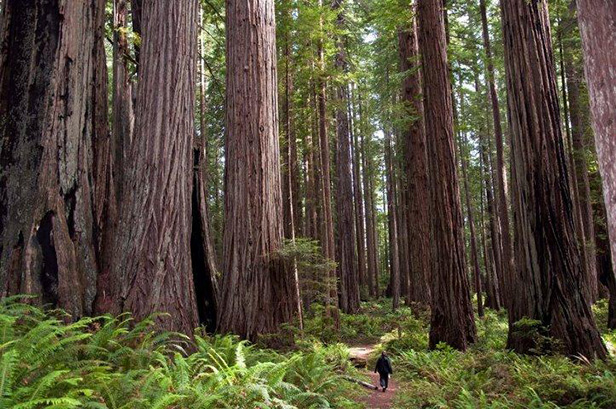
 Friends of Gualala River Protecting the Gualala River watershed and the species living within it
Friends of Gualala River Protecting the Gualala River watershed and the species living within it
